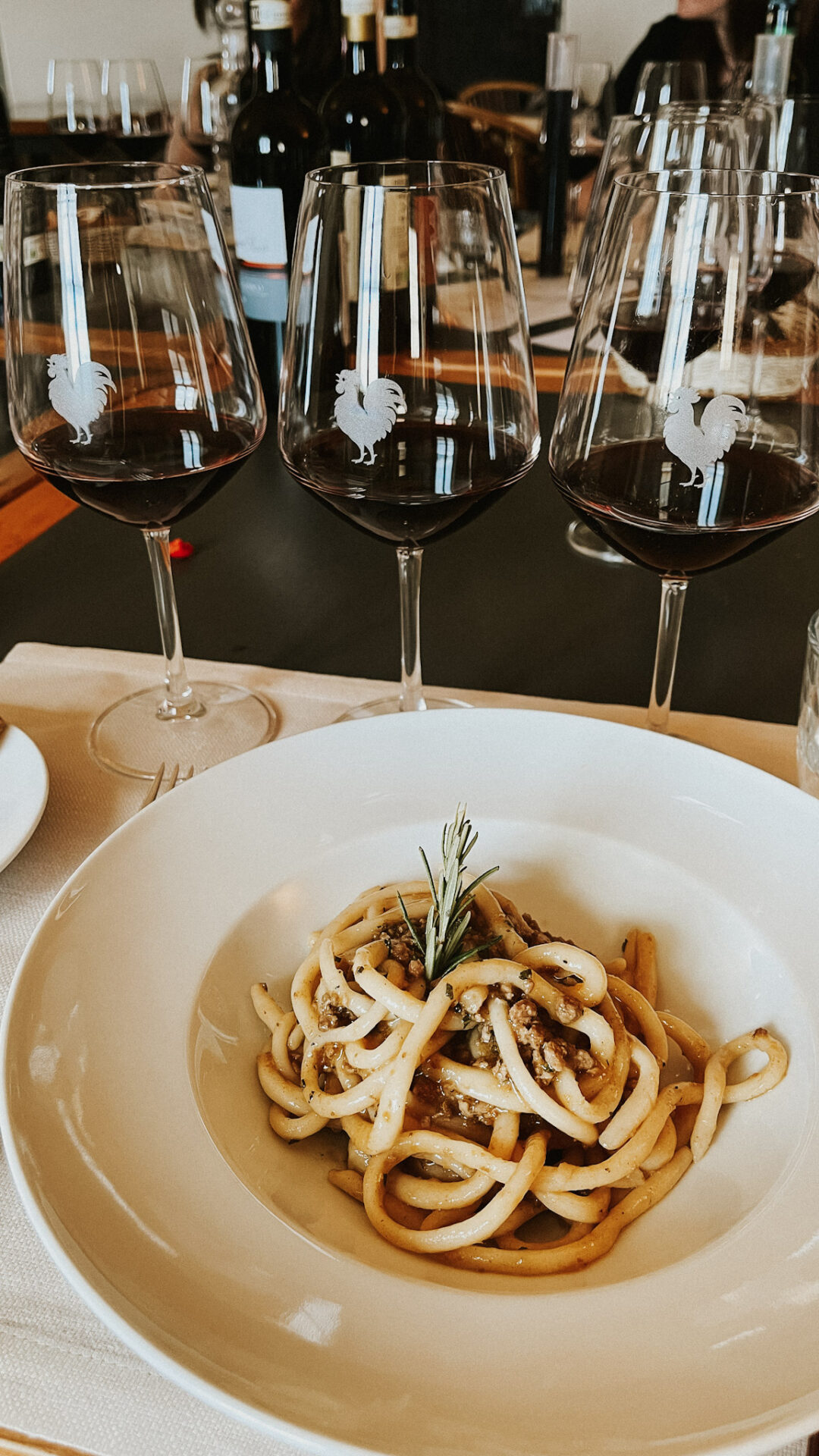
Are you ready to become an Italian wine connoisseur? Look no further, because we’re here to give you a complete guide to Italian wines – from the light and bright Prosecco sparkling white wine, to strong-bodied Super Tuscans with unmistakable character!
Come on a journey with us and explore the history, flavors, regions, designations, and prices of some of Italy’s most beloved varietals. So pull up your favorite chair (or head out for an alfresco dinner!), pour yourself a glass of Grillo or Nero d’Avola and join us on our exploration into the world of Italian wines.

Must-Know Italian Red Wines
Italian red wines are renowned for their rich, complex flavors, and are some of the most highly sought-after wines in the world. Italy produces a wide range of red wines, each with its own unique personality and character.
Whether you prefer a full-bodied, richly flavored wine, or something lighter and more refreshing, Italian red wines have something to offer every palate.
Barolo
A bold, full-bodied wine made from the Nebbiolo grape in the Piedmont region. It is often described as having flavors of cherry, licorice, and tobacco, and has high tannins.
Chianti
A medium-bodied wine made primarily from the Sangiovese grape in the Tuscany region. It is known for its tart cherry and herbal flavors, and often has a dry, tannic finish. You’ll sometimes see it labeled as “Chianti Classico”, which indicates a high quality of the wine from a more protected designation.
Related: Sangiovese vs Chianti
Brunello di Montalcino
A rich, full-bodied wine made from the Sangiovese grape in the Montalcino region of Tuscany. It is known for its complex flavors of dark fruit, leather, and tobacco, and has high tannins.
Amarone della Valpolicella
A rich, full-bodied wine made from dried grapes in the Valpolicella region of Veneto. It is known for its intense flavors of dried fruit, chocolate, and coffee, and has high alcohol content.
Nero d’Avola
A full-bodied wine made from the Nero d’Avola grape in the Sicily region. It is known for its dark fruit flavors and spicy notes, and often has a smooth, velvety texture.
Barbera
A medium-bodied wine made from the Barbera grape in the Piedmont region. It is known for its bright acidity and flavors of red fruit, and is often aged in oak barrels to add complexity.
Valpolicella
A light-bodied wine made from a blend of grapes (primarily Corvina, Rondinella, and Molinara) in the Valpolicella region of Veneto. It is known for its bright red fruit flavors and light tannins, and is often enjoyed young.
Dolcetto
A medium-bodied wine made from the Dolcetto grape in the Piedmont region. It is known for its low tannins and fruity flavors of black cherry and blackberry, and is often enjoyed as a casual, everyday wine.
Montepulciano d’Abruzzo
A medium-bodied wine made from the Montepulciano grape in the Abruzzo region. It is known for its dark fruit flavors and hints of spice, and often has a soft, velvety texture.
Sagrantino di Montefalco
A full-bodied wine made from the Sagrantino grape in the Montefalco region of Umbria. It is known for its intense flavors of dark fruit, chocolate, and spice, and has high tannins and acidity. It is often aged for several years before drinking to allow its flavors to fully develop.
Super Tuscans
Super Tuscan wines are a relatively recent addition to the Italian wine scene. The term “Super Tuscan” refers to a group of wines that were created in the 1970s and 80s by rebel winemakers who broke with traditional winemaking practices in Italy. These wines are typically made with non-indigenous grape varieties, such as Cabernet Sauvignon and Merlot, and are often blended with local varieties like Sangiovese to create rich, full-bodied wines with a unique flavor profile.
Pinot Noir
Pinot Noir is not commonly grown in Italy due to its sensitivity to the country’s warm climate. However, some Italian winemakers have experimented with growing the grape in cooler regions, such as Alto Adige, where it has produced successful results. Italian Pinot Noir wines tend to have a lighter body and fruit-forward character, with notes of cherry and raspberry.
Suggested: 10+ Italian Charcuterie Board Ideas
For all you Italian wine lovers out there, this guide has all the best Italian-inspired charcuterie boards — perfect for pairing with Italian wines!
>> Read the post here <<
Italian White Wine
While Italian red wines are often the stars of the show, the country’s white wines are just as worthy of attention.
Italy is home to a wide variety of white grape varietals, each of which imparts its own unique flavor and aroma to the wine. From the crisp, refreshing Pinot Grigio of Veneto to the aromatic, honeyed Moscato of Piedmont, Italian white wines offer a diverse range of styles and flavors that are sure to please any palate.
Whether you’re a fan of light and fruity wines or prefer something more complex and full-bodied, Italy has a white wine for you.

Pinot Grigio
A light-bodied wine made from the Pinot Grigio grape in the Veneto region. It is known for its crisp acidity and flavors of citrus and green apple, and is a popular choice for summertime sipping.
Vermentino
A medium-bodied wine made from the Vermentino grape in various regions throughout Italy. It is known for its bright acidity and flavors of tropical fruit and citrus, and is often enjoyed with seafood.
Gavi
A light-bodied wine made from the Cortese grape in the Piedmont region. It is known for its crisp, mineral-driven flavors and subtle fruit notes, and is often enjoyed as an aperitif.
Soave
A light-bodied wine made from the Garganega grape in the Veneto region. It is known for its delicate floral aromas and flavors of pear and almond, and is a popular choice for pairing with seafood and light pasta dishes.
Falanghina
A medium-bodied wine made from the Falanghina grape in the Campania region. It is known for its lively acidity and flavors of green apple, pear, and tropical fruit, and is often enjoyed with seafood and spicy dishes.
Arneis
A medium-bodied wine made from the Arneis grape in the Piedmont region. It is known for its floral aromas and flavors of peach, apricot, and almond, and is often enjoyed as an aperitif or paired with white meats and risotto.
Fiano di Avellino
A medium-bodied wine made from the Fiano grape in the Campania region. It is known for its crisp acidity and flavors of honey, citrus, and almond, and is often enjoyed with seafood and pasta dishes.
Trebbiano
A light-bodied wine made from the Trebbiano grape in various regions throughout Italy. It is known for its refreshing acidity and flavors of lemon and green apple, and is often enjoyed as an aperitif or paired with light dishes.
Orvieto
A light-bodied wine made from a blend of grapes (primarily Trebbiano and Grechetto) in the Umbria region. It is known for its crisp acidity and flavors of green apple, lemon, and almond, and is often enjoyed as an aperitif or paired with seafood.
Pinot Bianco
Pinot Bianco is a white grape variety that is widely grown in Italy and used in the production of a variety of Italian white wines. Italian Pinot Bianco wines are known for their delicate aromas and flavors of citrus, green apple, and pear, and are usually fermented and aged in stainless steel tanks to preserve their fresh fruit flavors and aromas. It is often used as a blending grape.
Italian Sparkling Wine
When it comes to celebratory drinks, Italian sparkling wines are a top choice for many. From crisp, dry Prosecco to the luxurious, yeasty Franciacorta, Italy is home to a range of sparkling wines that are sure to add some sparkle to any occasion.
Italian sparkling wines are made using a variety of methods, including the traditional method used in Champagne production and the tank method used to make Prosecco. With a wide range of styles and flavor profiles, Italian sparkling wines offer something for everyone.
Whether you’re celebrating a special occasion or just looking for a refreshing sip, Italian sparkling wines are a perfect choice.
Prosecco
This is the most well-known Italian sparkling wine and is produced in the Veneto region of Italy. Prosecco is made using the Charmat method, where the second fermentation takes place in large steel tanks, resulting in a fresh and fruity wine with a creamy texture. Prosecco is known for its flavors of green apple, citrus, and pear and is often enjoyed as an aperitif or paired with light dishes.
Franciacorta
Produced in the Lombardy region of Italy, Franciacorta is made using the traditional method used in Champagne production. This method involves a secondary fermentation in the bottle, resulting in a wine with a fine and persistent perlage, complex aromas, and flavors of citrus, apple, and brioche. Franciacorta is often paired with seafood and white meat dishes.
Lambrusco
This sparkling red wine is produced in Emilia-Romagna region of Italy. It is made using the Charmat method and is known for its bright, fruity, and slightly sweet flavor profile. Lambrusco is often enjoyed as an aperitif or paired with rich and savory dishes.
Moscato d’Asti
Produced in the Piedmont region of Italy, Asti is a sweet sparkling wine made from the Moscato grape using the Charmat method. Asti is known for its aromas and flavors of ripe peach, apricot, and honey, making it a perfect pairing for dessert or enjoyed on its own as a celebratory drink.

Fun Facts about Italian Wines
Here are a few fun facts for you about Italian wines:
- Italy is the largest wine-producing country in the world, producing around one-fifth of the world’s wine.
- The world’s oldest wine, dating back over 5,000 years, was discovered in a cave in the Italian region of Abruzzo.
- Italy has over 500 indigenous grape varieties, more than any other country in the world.
- The shape of a wine bottle, which is now used around the world, was first developed in the 17th century by the Italian winemaker, Dom Perignon.
- The term “Super Tuscan” was first used in the 1970s to describe high-quality, non-traditional wines produced in Tuscany. Today, Super Tuscans are some of the most sought-after Italian wines.
- Italian wines were a favorite of Julius Caesar, who reportedly said, “Wine is one of the necessities of life for me.”

